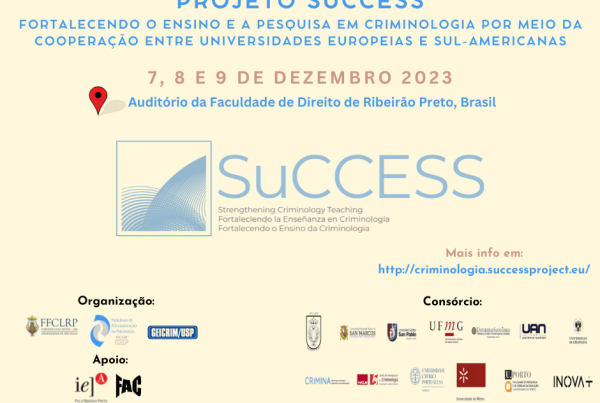On May 4th 2022, the CRÍMINA centre held the Conference on New Trends in Geographical Analysis of Crime, in connection with the master’s degree in Analysis and Prevention of Crime (MAPc).
During this wide-ranging working day, there was the opportunity to meet with many experts on the subject.
The day was opened by Dr Fernando Miró Llinares, Director of the CRÍMINA Centre for the Study and Prevention of Crime and Director of the master’s degree in Crime Analysis and Prevention (MAPc).
Afterwards, Mr Diego Maldonado, graduate and professor of the Official Master’s Degree in Crime Analysis and Prevention offered by the CRÍMINA centre of the Miguel Hernández University and professor at the University of Cadiz made a brilliant journey through the history of geographical analysis. In his lecture: “Introduction to geographic information systems for the geographic analysis of crime”.
After the introduction, Ms Alba Page, who is a GIS technician at ESRI in Spain, Mr Daniel Salafranca and Mr Fernando Llorens Cobos, both professors at the UMH’s Centro Crímina, spoke about the Tools for Geographic Analysis: Geographic Information Systems.
To close the first section of lectures, Mr Fernando Llorens Cobos told how criminologists can determine which are the so-called attractors of crime by using the RTM (Risk Terrain Modeling) tool.
Afterwards, in a round table discussion, there was an opportunity to discuss new trends in the geographical analysis of crime. On this occasion, Mr Daniel Salafranca, with his paper entitled “Where is the next place where a serial paedophile will act?”.
Diego Maldonado spoke about the effect of the edge in the spatial analysis of crime. He presented a tool in ArcGis to solve the problem. Geographical analysis tools can contain biases and Diego explained how these biases can be corrected.
Dr José Eugenio Medina, Intendant of the Local Police of Elche, gave a presentation on data analysis in local police forces. The speaker pointed out that the data collected by police officers in the first instance may contain biases and elements that need to be reviewed, due to the conditions in which the statement-taking is carried out.
Finally, the day closed with a presentation by Dr. and Professor Braulio Figueiredo from the Federal University of Minas Gerais, who gave a paper on the Spatial Concentration of Crime and Police Management by Hot Spots in Belo Horizonte, Brazil. Brazil is one of the most violent countries globally, and the use of these tools has proven to be very effective. GIS and crime analysis experts were able to help their police to prevent crime by discovering the so-called criminal “Hot Spots”.
For more information please contact:
Rocío Martínez Almanza: r.martinezalmanza@crimina.es





